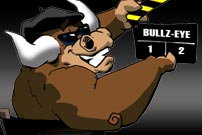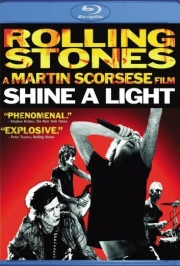 With the temperature dropping, it's time to find someone to keep you warm. Find your hookups with our online dating guide!
With the temperature dropping, it's time to find someone to keep you warm. Find your hookups with our online dating guide!
- Rated PG-13
- Documentary
- 2008
- BD
All photos © Paramount Pictures
Reviewed by Jonathan Flax
()
alfway through Martin Scorsese’s new Rolling Stones concert doc “Shine a Light,” the film jumps briefly to an early-sixties newsreel featuring a shy, youthful, yet already oddly charismatic Mick Jagger. Insisting to his interviewer that the Stones are hardly a new band, having already logged two years of recording and gigging, Mick boldly predicts that the group is now set up to keep going for at least another twelve months.
Cue the next jump: back to a blistering live show, shot in the fall of 2006 at New York’s Beacon Theatre. Leading the Stones through a charged, hit-laden set is 63-year-old Mick, preening, primping, doing calisthenics, and otherwise mesmerizing the audience, his own bandmates, and Scorsese’s cameras.
If the legendary director was trying to address aging and the passage of time with “Shine a Light,” smearing and complicating the issue as he did with the idea of “truth” in “The Departed,” then, well, mission accomplished. How else to explain the Stones still managing to play as hard, and as well, and as loudly as ever, even as they swagger toward 70? Except to assert that it cannot, in fact, be explained. How is Keith still standing? “I guess my luck hasn’t run out yet,” the guitarist says in another newsreel. Exactly.
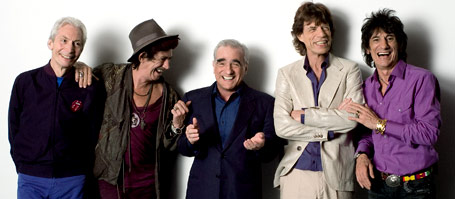
Eighty percent of “Shine a Light” is comprised of the Beacon Theatre gig itself, presented with none of the adornment of the elaborate, stadium-ready Bigger Bang tour. Mixed very loud by the legendary Bob Clearmountain, the Beacon show packs a visceral wallop, from the opening guitar strum of “Jumpin’ Jack Flash” to encore-closer “Satisfaction.” At the screening I attended the volume was cranked – and I can only assume that this is a directive from Paramount Pictures. I can’t imagine this movie not turned to eleven.
A breathless three-song sequence near the top of the show – “Shattered,” “She Was Hot,” “All Down the Line” – is a highlight, with Keith’s and Ronnie’s guitars fantastically dirty in tone, and Mick transcending self-parody with his patented stage prancing. Mick is like Bono in that way, going so far beyond his own caricature that it somehow circles back around...and works. Meanwhile, the only Stone who looks his age, Charlie Watts, drums along with his signature, swinging blues-rock style (no hi-hat on the backbeat, please!) that hasn’t changed since 1962. Scorsese catches him sighing to the camera in exhaustion at the last note of “All Down the Line.” It’s a great moment – and then you realize, we’re only 20 minutes in.
And there are the segments in the show that do not work so well. As in Scorsese’s “The Last Waltz,” there are the requisite duets, and two out three of these were begging to be left on the cutting room floor. Jack White’s appearance, during which he trades lines on “Loving Cup,” is hard to watch. White’s one-trick voice is brought into sharp relief next to Mick’s versatile warble, and the White Stripes’ frontman looks awkward and nervous. That’s understandable – but it does stop cold the concert’s flow. Worse is Christina Aguilera’s surprise turn singing and dancing with Mick on “Live with Me.” The opposite is true here – strong pipes, and not an ounce of intimidation or nerves for Aguilera. But it feels forced, like nothing else does in this show – or in the film, for that matter.
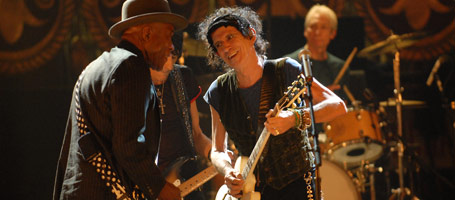
Another duet, however, is a clear standout. Buddy Guy rips through Muddy Waters’ “Champagne and Reefer,” with Scorsese perfectly fixated on a tight shot of Guy’s fully in-character stare between lines. Guy’s guitar is piercing, and his performance is about as dangerous and electric as Aguilera’s, and White’s, were safe and dull.
Perhaps the sweetest moment in the film is when Keith ditches the guitar to take center stage and sing lead on “You Got the Silver,” a suggestion from Scorsese. Without his axe, Keith looks a bit shy himself, even lost at first, before diving into the moment and delivering a vocal performance every bit as soulful as Mick’s. “Cool, huh?” he asks the crowd afterward.
After another Keith number, Mick returns dramatically via a door in the back of the theatre during the intro for “Sympathy for the Devil.” Though Scorsese remains mostly light-of-touch during the concert portion of “Shine a Light,” here he sets up a literal, climactic wall of light through which Mick bursts back into the film, decked out in a coat of black feathers. Cue more prancing, more preening, and a searing version of the classic ‘60s anthem.
Aside from the interstitial newsreels, the rest of the non-concert portion of “Shine a Light” occurs at the beginning. At least the first 20 minutes show a playful tension between director and lead singer, debating the stage set-up, potentially obtrusive camera tracks, and the order of songs. About this latter issue, Scorsese is portrayed pleading, as politely as he can, that it would “help…if I knew…what the first song is!” Cue “Jumpin’ Jack Flash.”
Single-Disc Blu-ray Review:
You shouldn’t expect much in the way of bonus material for a concert film, but the HD release of “Shine a Light” does include a few goodies. Along with a behind-the-scenes featurette that shows the boys during rehearsals and in one-on-one interviews with Martin Scorsese, the Blu-ray also includes deleted performances for “Undercover of the Night,” “Paint it Black,” Little T&A,” and “I’m Free.”
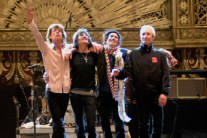 |
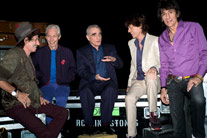 |
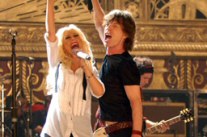 |
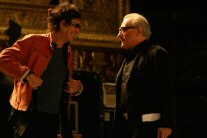 |
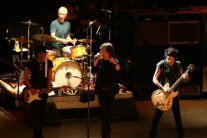 |
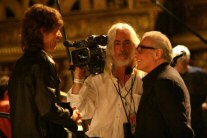 |
You can follow us on Twitter and Facebook for content updates. Also, sign up for our email list for weekly updates and check us out on Google+ as well.
